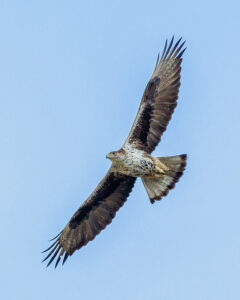Third International Scientific and Practical Conference “Eagles of the Palearctic: Study and Conservation”
Raptors Conservation. Suppl. 2. Proceedings of Conferences
Does the Release of Bonelli’s Eagles from Captive Breeding Nucleus Contribute to Population Rehabilitation?
Mayrose A. (Department of Evolutionary and Environmental Biology and Institute of Evolution, University of Haifa, Haifa, Israel)
Contact:
Asaf Mayrose asafmayrose96@gmail.com
Recommended citation: Mayrose A. Does the Release of Bonelli’s Eagles from Captive Breeding Nucleus Contribute to Population Rehabilitation? – Raptors Conservation. 2023. S2: 78–79. DOI: 10.19074/1814-8654-2023-2-78-79 URL: http://rrrcn.ru/en/archives/34891
During the late 1960s, the Bonelli’s Eagle (Aquila fasciata) population in Israel was brought to the brink of extinction, due to a combination of factors. A rehabilitation program set in 2000 included few measures, among them the release of eaglets from a captive breeding nucleus, producing two to seven eaglets yearly. In recent years there is an apparent increase in the number of Bonelli’s Eagle pairs breeding in the wild, including the reoccupation of territories that were abandoned for many years. Yet, there is only little evidence for the recruitment of captive-born eagles into the wild population, and their contribution to its growth is unclear.
These subjects are now being examined by a telemetry study, comparing dispersal patterns and survival rates of captive versus nature hatched eagles. The results from the first five years of study show significant differences between these two groups, with captive hatched eagles dispersing much farther away from their natal site compared to the dispersal of wild eagles. The different dispersal patterns may be the reason for the lower survival rates exhibited by the captive hatched eagles, as many of them wander to neighboring countries where they are subjected to shooting and trapping. Moreover, these birds also have a higher tendency to being electrocuted on power lines. Genetic analysis and alteration of the releasing methods are being used in order to check whether the different movement and behavior attributes of the captive-hatched eagles are linked to genetic properties or behaviorally mechanisms during their growth.

